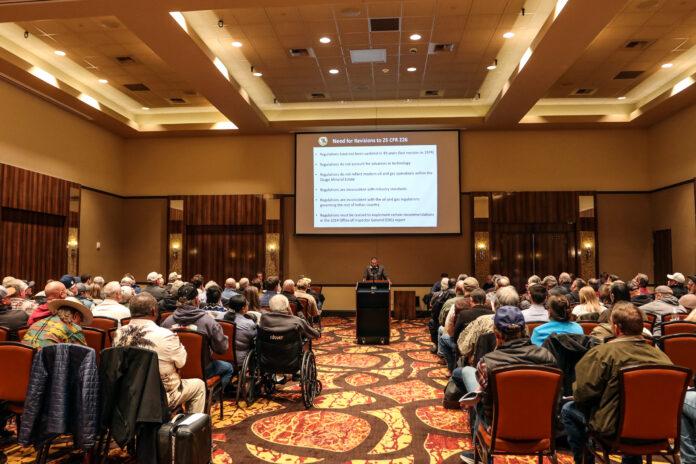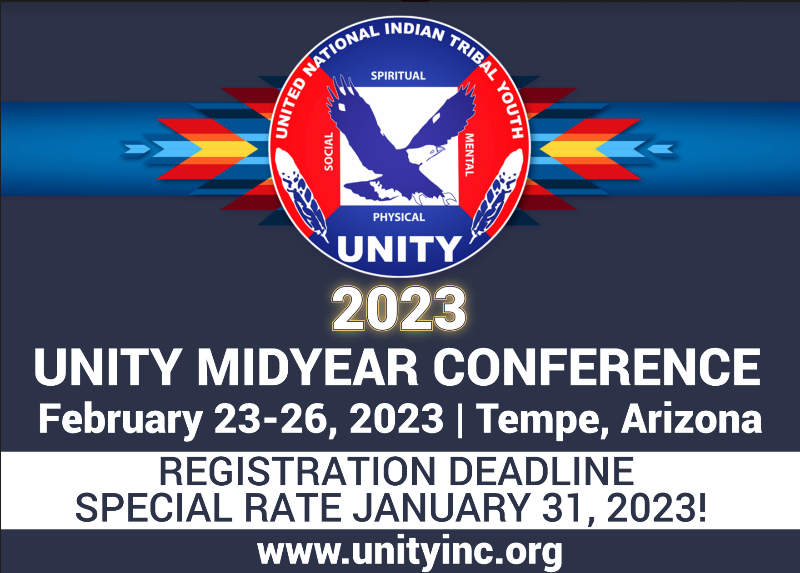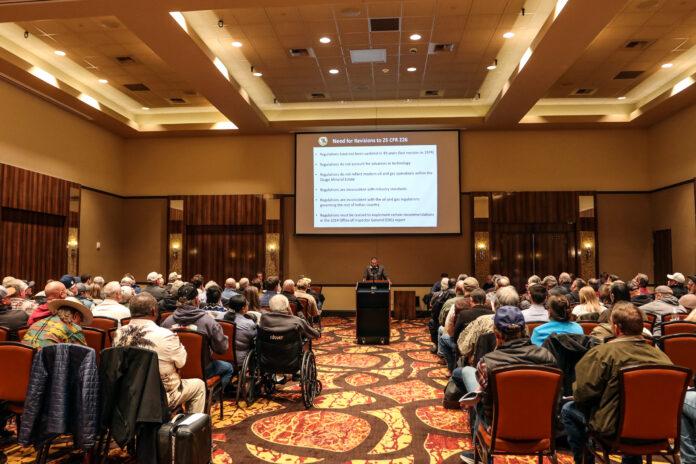
Standing Bear: ‘The proposed rules are too long, too detailed and too complicated’
Written by Shannon Shaw Duty
SKIATOOK, Okla. – It’s clear the officials of the Osage Nation, the Osage Minerals Council and the oil and gas producers of Osage County, soundly reject the U.S. Department of Interior’s proposed rule changes to 25 C.F.R. Part 226. The proposed rules would modernize oil and gas mining within the Osage Mineral Estate and require producers to learn how to file reports electronically.
On the evening of Feb. 8, it was standing room only in the ballroom of the Osage Casinos and Hotel, despite inclement weather. More than 160 people crowded together to hear or give comments at the public meeting.
Presenting first was Eddie Streater, Regional Director of the Eastern Oklahoma Regional Office for the U.S. Department of the Interior (DOI) Indian Affairs. He began the meeting with a PowerPoint slideshow that touched on the highlights of the proposed rules.

Following him was a second slideshow presented by April Lockler of the Office of Natural Resources Revenue (ONNR). Her slideshow was a rundown of the new Electronic Production and Royalty Reporting system developed for producers. A look of bewilderment was on many faces in the room.
Both presentations took up about 30 minutes before organizers opened the floor for public comment. Each commenter was given two minutes and first preference was given to Osage officials, beginning with Principal Chief Geoffrey Standing Bear.
He didn’t mince words in expressing his displeasure with the proposed rules.
“The proposed rules are too long, too detailed and too complicated,” Standing Bear said, with many heads shaking in agreement throughout the crowd. “The new regulations will drive producers off the reservation because they’re too complicated.”
“Royalty payments will go down and not up.”
He went on to say the Osage Minerals Council (OMC) has asked the DOI not to administer the rules and instead redo the government-to-government consultation process because the former and current OMC was not consulted, and they were only given one month to look over the 71-page document.
Councilman Paul Revard, who spent 46 years as an oil producer in the Osage, said the Osage Reservation used to be the best place to drill because the land was shallow, there was low risk and “it had the best oil records in the United States.”
However, for the past eight years, he said it’s been nothing but roadblocks. In 2014, access to those oil records was hampered when the BIA required producers to submit a Freedom of Information Act (FOIA) request to look at those records. Second, the U.S. Fish and Wildlife Service declared the American Burying Beetle endangered and “brought drilling to a screeching halt.” Third, the BIA began requiring Environmental Impact Statements before drilling.

“And now, you’re back with the CFR’s,” he said, voice rising. “At what point … are you helping us? Because you’re supposed to be helping us develop our mineral estate and I just don’t see that. All I see is attacks right and left.”
Councilmen Myron Red Eagle, Joe Cheshewalla, Anthony Shackelford, and Talee Redcorn also provided statements. One common thread, Osage shareholders whose sole income is their headright check, are suffering.
The same could be said for many of the oil producers at the meeting. Justin Delong, an oil and gas production foreman, is a third-generation producer in Osage County.
“What’s proposed here is going to put a lot of these people out of business,” he said.
Streater said the federal government will document the comments. He was pleased with the large turnout because that’s what the meeting was for, to listen and answer public comment to the proposed rules, he said. He also encouraged people to submit written comments. He said as of Feb. 8, they have received one written comment.
How to submit comment on the Proposed Regulations:
- Federal Rulemaking Portal: https://www.regulations.gov. Enter ‘‘RIN 1076– AF59’’ in the search box and click ‘‘Search.’’ Follow the instructions for sending comments.
- Mail: U.S. Department of the Interior, Eastern Oklahoma Region, Bureau of Indian Affairs, Attn: Regional Director, P.O. Box 8002, Muskogee, OK 74402. All submissions must include the words ‘‘Bureau of Indian Affairs’’ or ‘‘BIA’’ and ‘‘RIN 1076–AF59.’’
- Hand Delivery/Courier: U.S. Department of the Interior, Eastern Oklahoma Region, Bureau of Indian Affairs, Attn: Regional Director, 3100 W Peak Boulevard, Muskogee, OK 74402.
- The Department will also accept written comments from the public through March 17, 2023.

For all questions, contact Oliver Whaley, Director, Office of Regulatory Affairs and Collaborative Action, Office of the Assistant Secretary—Indian Affairs, (202) 738– 6065, comments@bia.gov.







